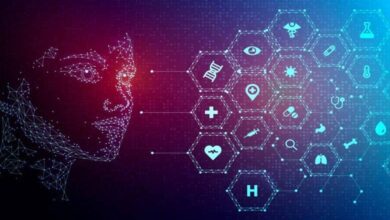How Has Technology Changed Education Guide

The digital age has revolutionized various aspects of our lives, and education is no exception. From online courses and digital textbooks to virtual classrooms and collaborative tools, technology has transformed the way we learn, teach, and interact with information. In this article, we will delve into the various ways technology has changed education, discuss the advantages and challenges of these innovations, and consider the implications of these changes for the future of learning.
Online Learning and Distance Education
One of the most significant ways technology has changed education is through the widespread availability of online learning platforms and distance education. Students can now access a wealth of resources and courses from around the world, often for free or at a fraction of the cost of traditional education. This has democratized access to education, allowing learners from diverse backgrounds and locations to pursue their interests and expand their knowledge.
Personalized Learning and Adaptive Curricula
Technology has made it possible to tailor educational content to each student’s unique needs and learning style. Using data-driven insights and adaptive algorithms, educational software can now provide personalized curricula that cater to individual strengths and weaknesses. This approach ensures that students are consistently engaged and challenged, leading to better learning outcomes and higher levels of motivation.
Virtual Reality and Immersive Learning:
Virtual reality (VR) and augmented reality (AR) technologies have opened up new possibilities for immersive learning experiences. Students can now explore virtual environments, conduct virtual experiments, and participate in simulations that provide a deeper understanding of complex concepts. These immersive experiences have been shown to improve retention and engagement, making learning more enjoyable and effective.
Collaborative Tools and Global Connections:
Technology has made it easier for students, teachers, and experts to collaborate and share knowledge across geographic boundaries. With tools like video conferencing, cloud-based file sharing, and online discussion boards, learners can now work together on projects, engage in debates, and access the expertise of professionals from around the world. This global connectivity not only enriches the learning experience but also fosters cultural understanding and broadens perspectives.
Assessment and Analytics:
Digital tools and platforms have revolutionized the way student performance is assessed and analyzed. Teachers can now track student progress in real-time, identify areas of difficulty, and provide targeted feedback and support. This data-driven approach to assessment enables educators to make more informed decisions about instruction, ultimately leading to better outcomes for students.
Challenges and Considerations:
While technology has undeniably transformed education in many positive ways, it also presents some challenges and considerations:
- Digital Divide: Access to technology and reliable internet connections remains a significant barrier for many students, particularly in rural areas and lower-income communities. This digital divide can exacerbate existing educational inequalities and limit the potential benefits of digital transformation.
- Privacy and Security: The increasing reliance on digital platforms and tools raises concerns about student privacy and data security. Schools and educational institutions must prioritize the protection of sensitive information and adhere to strict privacy regulations.
- Professional Development: Teachers and educators need ongoing professional development and support to effectively integrate technology into their instruction. This includes training in the use of digital tools, as well as strategies for maintaining student engagement in online and blended learning environments.
Conclusion:
Technology has fundamentally changed the landscape of education, providing new opportunities for personalized learning, global collaboration, and immersive experiences. However, it also presents challenges related to access, privacy, and the need for professional development. As we continue to embrace the digital transformation in education, it’s essential to address these challenges and ensure that the benefits of technology are equitably shared by all students. By harnessing the power of technology and adapting to the evolving demands of the digital age, we can create more engaging, effective, and inclusive learning environments that empower students to reach their full potential and prepare them for the challenges of the 21st century.




